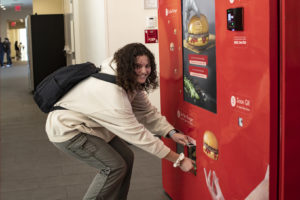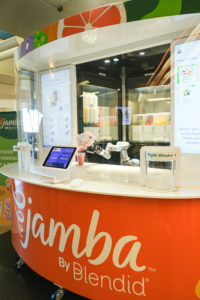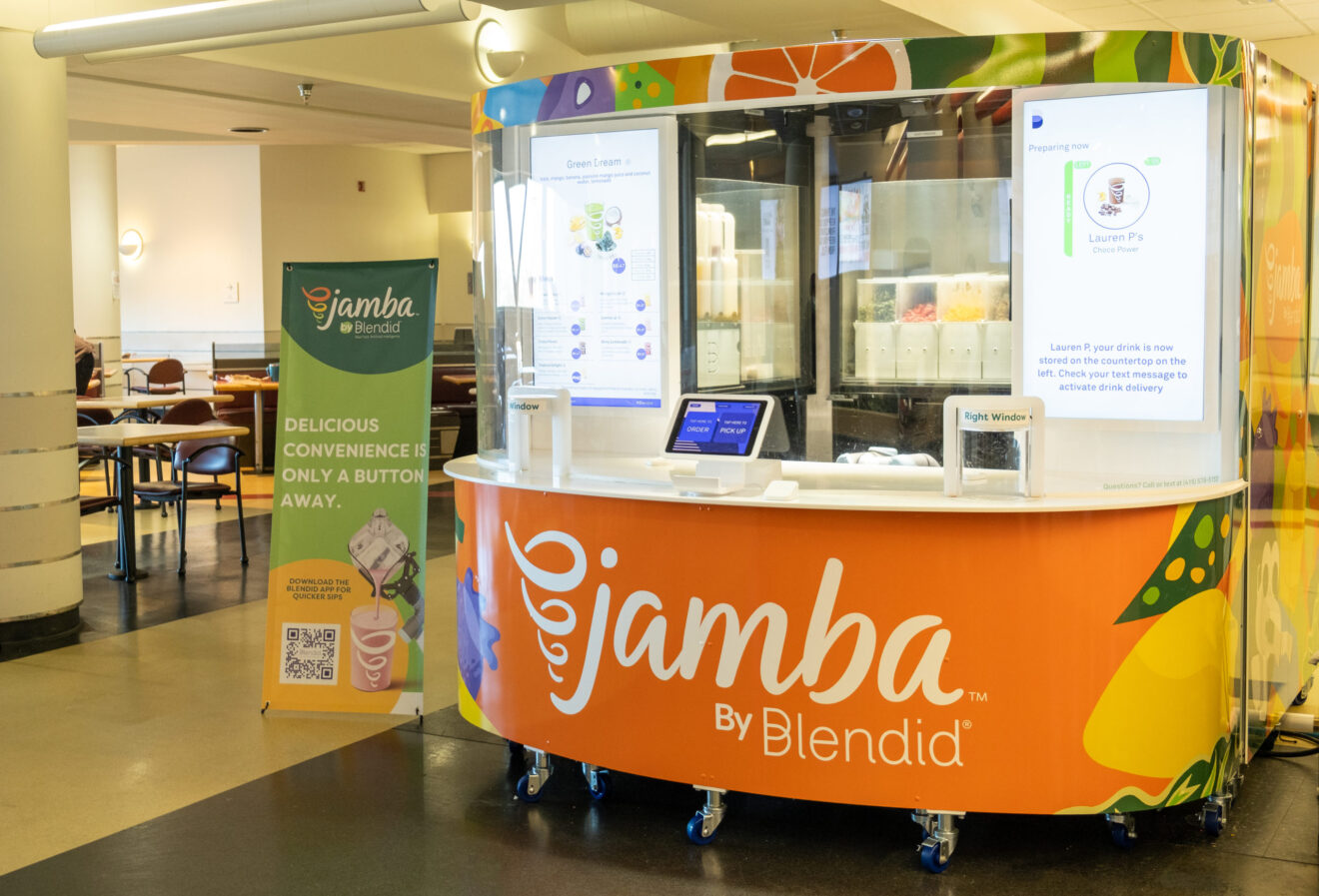Automation is paving the way for appetizing on-demand foodservice options that are miles ahead of traditional vending machines. Not too long ago, the food and beverage options available 24/7 were limited to basic vending machines and a handful of convenience stores or quickservice eateries with late-night hours. Some more sophisticated, temperature-controlled vending machines that dispense pre-made salads or sandwiches, like those from Farmer’s Fridge or the smart fridges debuted by Subway last year, offer an on-demand eating experience that is a step above shelf-stable snacks, but a growing group of companies are taking it to the next level with technology that offers meals and beverages made fresh by robots.
These automated machines fall somewhere between a vending machine and a restaurant, making it possible to get made-to-order food at any time. This accessibility is important to consumers who increasingly rely on the convenience of restaurant takeout. More than half (54%) of adults say purchasing takeout or delivery food is essential to the way they live, according to the National Restaurant Association’s 2022 State of the Restaurant Industry report. This figure is even higher among younger consumers, with 72% of millennials and 66% of Generation Z adults saying the same.
The ability to get fresh food any time of day or night is especially appealing in certain areas where restaurants might operate non-traditional locations, such as college campuses, airports and hospitals. The self-contained nature of this new class of automated foodservice operations means that they don’t need to be staffed at all – just periodically serviced and restocked. This creates a contactless experience for customers and a significant labor savings for restaurant operators, 62% of whom said their restaurant does not have enough employees to support its existing customer demand, according to a National Restaurant Association survey from November.
From freshly fired pizza to bespoke blended smoothies
This growing group of robot-run restaurant concepts runs the gamut from burgers to beverages. New Jersey-based RoboBurger debuted its first burger vending machine in a mall in March of 2022, and in November it entered the higher education space with a unit at St. John’s University in New York City.

“We want to provide a quick, fresh, and affordable solution that is open 24/7, even at 2 a.m. during midterms. Because RoboBurger needs only electricity to function, it can be placed in convenient locations where students spend time studying or even in dorms,” RoboBurger CMO Andy Siegel said in a press release.
The machine includes functions to toast buns, grill burgers, dispense condiments and even wash dishes. The newest model, RoboBurger 2.0, incorporates learnings from earlier iterations and can cook a burger in less than five minutes.
For many companies seeking to expand automated foodservice solutions, the pizza category has proven especially appealing. Automated pizza machines from companies including Let’s Pizza and Pizza ATM have had a growing presence in Europe for more than a decade, and several US companies have sprung up with plans to make such machines more common in the US. Wavemaker Labs, which launched foodservice automation company Miso Robotics, has generated nearly $17 million in crowdfunding for its automated pizza concept, Piestro, according to Crunchbase.
California-based Piestro plans to roll out a dual-revenue stream model, selling directly to consumers and also partnering with established brands through its “Powered by Piestro” division. The company has partnered with restaurants including Capriotti’s Sandwich Shop to test its technology, which can make a pizza from start to finish in three minutes. In July of 2022, Piestro announced a partnership with autonomous sidewalk delivery company Serve Robotics to work on technology that would allow customers to order the pizzas for delivery. Piestro predicts operators using its system to create pizzas will have profit margins of 40%, while the direct-to-consumer model will operate with a 49% profit margin – a significant improvement from the average 16% profit margin Piestro calculated for fast-casual restaurants.

For smoothie and juice company Jamba, the lower operating costs of automated units have allowed the brand to expand to “places we may have previously not been able to open, whether due to space, operational cost or other restrictions,” Jamba president Geoff Henry said.
The kiosks are maintained and restocked by local staffers, which Henry said “typically happens once per day depending on consumer traffic and smoothie production.”
Jamba partnered with foodservice automation technology company Blendid to create the Jamba by Blendid kiosks, which debuted at the University of San Francisco in March 2019. Since then, the partnership has expanded to seven more locations, including the newest unit that opened last month at Grady Memorial Hospital in Atlanta. Customers can order custom smoothies using tablets connected to the machine, although “many consumers choose to download the Blendid app, to take advantage of the ‘order ahead’ or ‘order again’ capabilities,” said Vipin Jain, CEO and co-founder of Blendid.
The Blendid app is separate from Jamba’s branded app, so customers aren’t able to participate in Jamba’s loyalty program at kiosk locations, although Jain said there is a plan to integrate the apps at some point in the future. He also noted that Blendid has plans to help other operators expand via kiosks, hinting at announcements to be made “in the near future.”
Read more like this from SmartBrief:
- 5 food and beverage trends to watch for 2023
- Restaurants reallocate some tasks to robots to deal with staffing shortages
- Labor-saving tech, plant-based chicken and eggs among restaurant show’s top trends
________________________________________________
If you liked this article, sign up for SmartBrief’s free email newsletter from the National Restaurant Association. It’s among SmartBrief’s more than 250 industry-focused newsletters.
